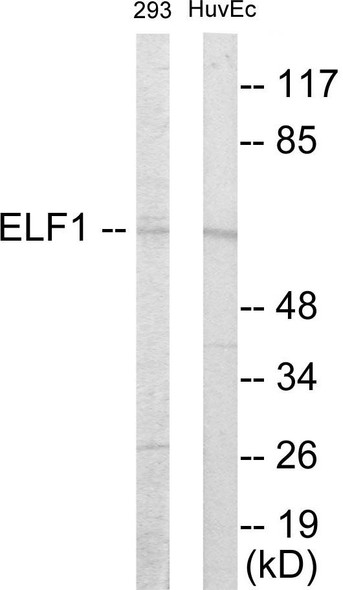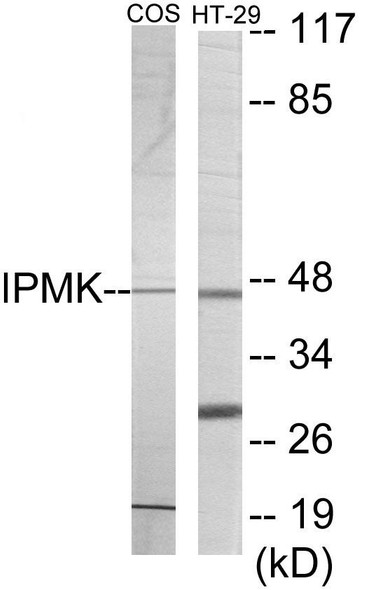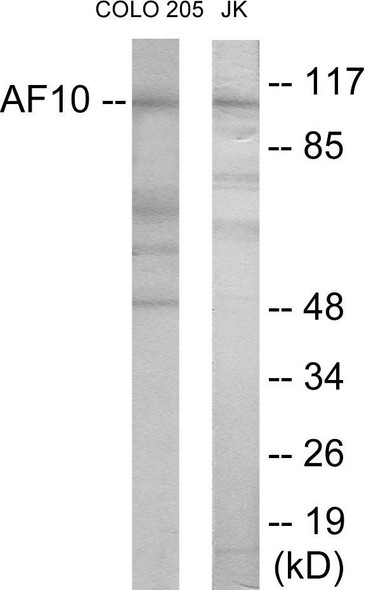Signal Transduction
ATPase Colorimetric Cell-Based ELISA
- SKU:
- CBCAB01205
- Product Type:
- ELISA Kit
- ELISA Type:
- Cell Based
- Research Area:
- Signal Transduction
- Reactivity:
- Human
- Reactivity:
- Mouse
- Reactivity:
- Rat
- Detection Method:
- Colorimetric
Description
| Product Name: | ATPase Colorimetric Cell-Based ELISA |
| Product Code: | CBCAB01205 |
| ELISA Type: | Cell-Based |
| Target: | ATPase |
| Reactivity: | Human, Mouse, Rat |
| Dynamic Range: | > 5000 Cells |
| Detection Method: | Colorimetric 450 nmStorage/Stability:4°C/6 Months |
| Format: | 96-Well Microplate |
The ATPase Colorimetric Cell-Based ELISA Kit is a convenient, lysate-free, high throughput and sensitive assay kit that can detect ATPase protein expression profile in cells. The kit can be used for measuring the relative amounts of ATPase in cultured cells as well as screening for the effects that various treatments, inhibitors (ie siRNA or chemicals), or activators have on ATPase.
Qualitative determination of ATPase concentration is achieved by an indirect ELISA format. In essence, ATPase is captured by ATPase-specific primary antibodies while the HRP-conjugated secondary antibodies bind the Fc region of the primary antibody. Through this binding, the HRP enzyme conjugated to the secondary antibody can catalyze a colorimetric reaction upon substrate addition. Due to the qualitative nature of the Cell-Based ELISA, multiple normalization methods are needed:
| 1. | A monoclonal antibody specific for human GAPDH is included to serve as an internal positive control in normalizing the target absorbance values. |
| 2. | Following the colorimetric measurement of HRP activity via substrate addition, the Crystal Violet whole-cell staining method may be used to determine cell density. After staining, the results can be analysed by normalizing the absorbance values to cell amounts, by which the plating difference can be adjusted. |
| Database Information: | Gene ID: 476, UniProt ID: P05023, OMIM: 182310, Unigene: Hs.371889 |
| Gene Symbol: | ATP1A1 |
| Sub Type: | None |
| UniProt Protein Function: | ATP1A1: the catalytic component of the active enzyme, which catalyzes the hydrolysis of ATP coupled with the exchange of Na and K ions across the plasma membrane. This action creates the electrochemical gradient of Na and K, providing the energy for active transport of various nutrients. Two splice-variant isoforms have been described. |
| UniProt Protein Details: | Protein type:EC 3.6.3.9; Hydrolase; Membrane protein, integral; Membrane protein, multi-pass; Transporter; Transporter, ion channel Chromosomal Location of Human Ortholog: 1p13.1 Cellular Component: endoplasmic reticulum; Golgi apparatus; integral to membrane; membrane; plasma membrane; protein complex; sarcolemma; sodium:potassium-exchanging ATPase complex Molecular Function:ATP binding; chaperone binding; potassium ion binding; protein binding; sodium ion binding; sodium:potassium-exchanging ATPase activity Biological Process: cellular potassium ion homeostasis; cellular sodium ion homeostasis; potassium ion import; regulation of sodium ion transport |
| NCBI Summary: | The protein encoded by this gene belongs to the family of P-type cation transport ATPases, and to the subfamily of Na+/K+ -ATPases. Na+/K+ -ATPase is an integral membrane protein responsible for establishing and maintaining the electrochemical gradients of Na and K ions across the plasma membrane. These gradients are essential for osmoregulation, for sodium-coupled transport of a variety of organic and inorganic molecules, and for electrical excitability of nerve and muscle. This enzyme is composed of two subunits, a large catalytic subunit (alpha) and a smaller glycoprotein subunit (beta). The catalytic subunit of Na+/K+ -ATPase is encoded by multiple genes. This gene encodes an alpha 1 subunit. Multiple transcript variants encoding different isoforms have been found for this gene. [provided by RefSeq, May 2009] |
| UniProt Code: | P05023 |
| NCBI GenInfo Identifier: | 114374 |
| NCBI Gene ID: | 476 |
| NCBI Accession: | P05023.1 |
| UniProt Secondary Accession: | P05023,Q16689, Q6LDM4, Q9UCN1, Q9UJ20, Q9UJ21, B2RBR6 B7Z2T5, B7Z3U6, F5H3A1, |
| UniProt Related Accession: | P05023 |
| Molecular Weight: | 113kDa |
| NCBI Full Name: | Sodium/potassium-transporting ATPase subunit alpha-1 |
| NCBI Synonym Full Names: | ATPase Na+/K+ transporting subunit alpha 1 |
| NCBI Official Symbol: | ATP1A1 |
| NCBI Protein Information: | sodium/potassium-transporting ATPase subunit alpha-1 |
| UniProt Protein Name: | Sodium/potassium-transporting ATPase subunit alpha-1 |
| UniProt Synonym Protein Names: | Sodium pump subunit alpha-1 |
| Protein Family: | Sodium/potassium-transporting ATPase |
| UniProt Gene Name: | ATP1A1 |
| Component | Quantity |
| 96-Well Cell Culture Clear-Bottom Microplate | 2 plates |
| 10X TBS | 24 mL |
| Quenching Buffer | 24 mL |
| Blocking Buffer | 50 mL |
| 15X Wash Buffer | 50 mL |
| Primary Antibody Diluent | 12 mL |
| 100x Anti-Phospho Target Antibody | 60 µL |
| 100x Anti-Target Antibody | 60 µL |
| Anti-GAPDH Antibody | 60 µL |
| HRP-Conjugated Anti-Rabbit IgG Antibody | 12 mL |
| HRP-Conjugated Anti-Mouse IgG Antibody | 12 mL |
| SDS Solution | 12 mL |
| Stop Solution | 24 mL |
| Ready-to-Use Substrate | 12 mL |
| Crystal Violet Solution | 12 mL |
| Adhesive Plate Seals | 2 seals |
The following materials and/or equipment are NOT provided in this kit but are necessary to successfully conduct the experiment:
- Microplate reader able to measure absorbance at 450 nm and/or 595 nm for Crystal Violet Cell Staining (Optional)
- Micropipettes with capability of measuring volumes ranging from 1 µL to 1 ml
- 37% formaldehyde (Sigma Cat# F-8775) or formaldehyde from other sources
- Squirt bottle, manifold dispenser, multichannel pipette reservoir or automated microplate washer
- Graph paper or computer software capable of generating or displaying logarithmic functions
- Absorbent papers or vacuum aspirator
- Test tubes or microfuge tubes capable of storing ≥1 ml
- Poly-L-Lysine (Sigma Cat# P4832 for suspension cells)
- Orbital shaker (optional)
- Deionized or sterile water
*Note: Protocols are specific to each batch/lot. For the correct instructions please follow the protocol included in your kit.
| Step | Procedure |
| 1. | Seed 200 µL of 20,000 adherent cells in culture medium in each well of a 96-well plate. The plates included in the kit are sterile and treated for cell culture. For suspension cells and loosely attached cells, coat the plates with 100 µL of 10 µg/ml Poly-L-Lysine (not included) to each well of a 96-well plate for 30 minutes at 37°C prior to adding cells. |
| 2. | Incubate the cells for overnight at 37°C, 5% CO2. |
| 3. | Treat the cells as desired. |
| 4. | Remove the cell culture medium and rinse with 200 µL of 1x TBS, twice. |
| 5. | Fix the cells by incubating with 100 µL of Fixing Solution for 20 minutes at room temperature. The 4% formaldehyde is used for adherent cells and 8% formaldehyde is used for suspension cells and loosely attached cells. |
| 6. | Remove the Fixing Solution and wash the plate 3 times with 200 µL 1x Wash Buffer for five minutes each time with gentle shaking on the orbital shaker. The plate can be stored at 4°C for a week. |
| 7. | Add 100 µL of Quenching Buffer and incubate for 20 minutes at room temperature. |
| 8. | Wash the plate 3 times with 1x Wash Buffer for 5 minutes each time. |
| 9. | Add 200 µL of Blocking Buffer and incubate for 1 hour at room temperature. |
| 10. | Wash 3 times with 200 µL of 1x Wash Buffer for 5 minutes each time. |
| 11. | Add 50 µL of 1x primary antibodies (Anti-ATPase Antibody and/or Anti-GAPDH Antibody) to the corresponding wells, cover with Parafilm and incubate for 16 hours (overnight) at 4°C. If the target expression is known to be high, incubate for 2 hours at room temperature. |
| 12. | Wash 3 times with 200 µL of 1x Wash Buffer for 5 minutes each time. |
| 13. | Add 50 µL of 1x secondary antibodies (HRP-Conjugated AntiRabbit IgG Antibody or HRP-Conjugated Anti-Mouse IgG Antibody) to corresponding wells and incubate for 1.5 hours at room temperature. |
| 14. | Wash 3 times with 200 µL of 1x Wash Buffer for 5 minutes each time. |
| 15. | Add 50 µL of Ready-to-Use Substrate to each well and incubate for 30 minutes at room temperature in the dark. |
| 16. | Add 50 µL of Stop Solution to each well and read OD at 450 nm immediately using the microplate reader. |
(Additional Crystal Violet staining may be performed if desired – details of this may be found in the kit technical manual.)






